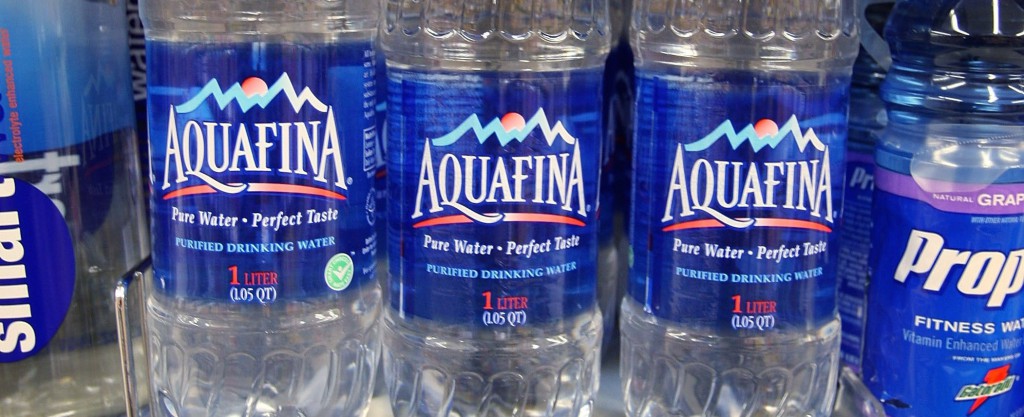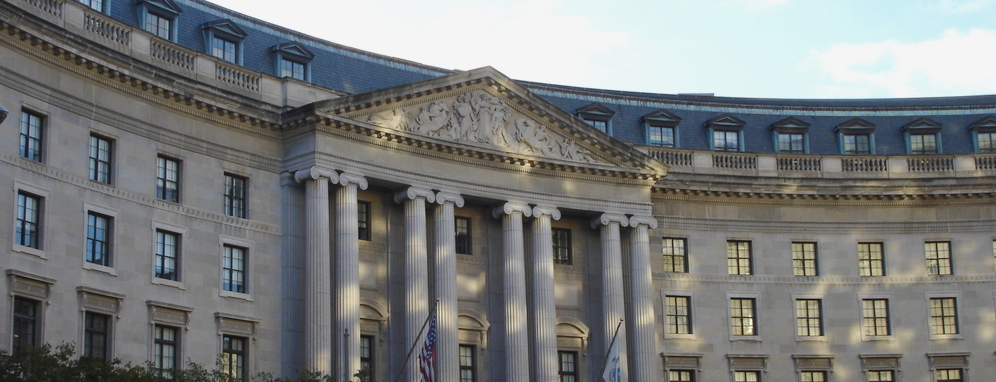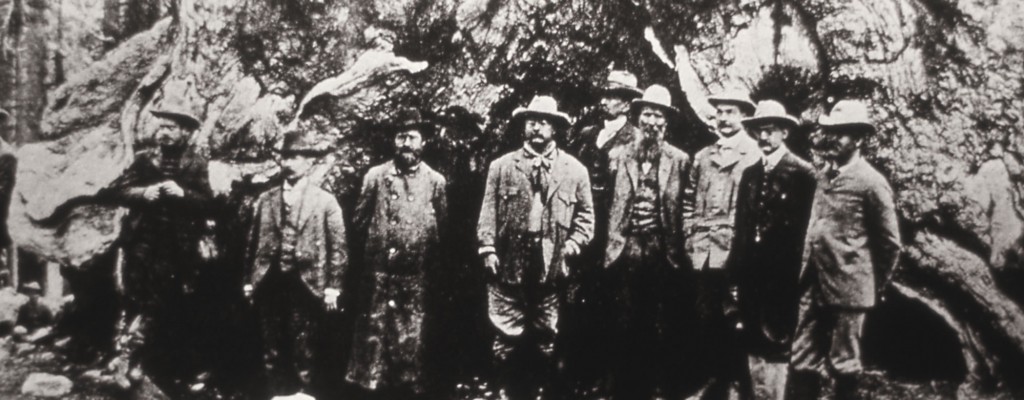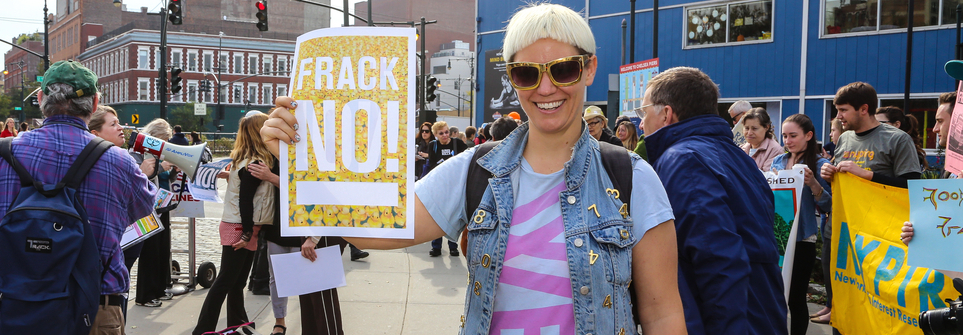Unafraid to break international laws, Greenpeace is the largest and one
of the most radical environmental activist groups in the world.
At A Glance
Greenpeace is the largest environmental activist organization in the
world with offices in 40 countries and annual revenue topping $368
million. Learn more about Greenpeace’s radical work:
Background

Founded in 1970 in Vancouver, Greenpeace started out as a collection
of individuals concerned with U.S. nuclear testing in Alaska and
frustrated with the
Sierra Club’s
lack of action on the issue. Originally called the “Don’t Make a Wave
Committee” and backed by Quakers and peaceniks, the group gained
recognition and success for its anti-nuclear campaign.
By the 1980s, Greenpeace had established itself as a major
non-governmental organization (NGO) with a vast funding network that
paralleled a multi-national corporation. As its funding grew, so did its
radicalism, to the point where it now campaigns against all coal, oil,
natural gas, nuclear, and hydroelectric power – together making up 95
percent of U.S. energy use.
[MS1]
Greenpeace is now the largest environmental organization in the world with annual revenues of
$368 million, an international supporter base of some
24 million, and what Forbes magazine
describes
as
“a skillfully managed business” with full command of
“the tools of
direct mail and image manipulation – and tactics that would bring
instant condemnation if practiced by a for-profit corporation.”
Greenpeace’s transformation from a loose group of anti-nuclear
peaceniks into a big-moneyed organization has centered on using junk
science to try to fundamentally change our way of life. It has alienated
many of its original founders leading to numerous high level
defections, most notably co-founder
Patrick Moore:
“Ultimately, a trend toward abandoning scientific objectivity in favor
of political agendas forced me to leave Greenpeace in 1986.”
Funding

Putting the “Green” in Greenpeace
According to Greenpeace’s 2012 annual report, it raised $368 million from fundraising alone, largely from international sources:
- German donors gave $70 million;
- U.S. donors gave $40 million; and
- Switzerland, the Netherlands, and the Nordic countries as a whole round out the top five largest sources of donations.
Greenpeace has also accepted mid-six-figure grants from the shadowy
Tides Foundation.
Greenpeace spent approximately one-third of this revenue on
fundraising expenditures. It spent a further one-sixth of income on
administrative expenses, leaving approximately half of its total revenue
to dedicate to its campaigns and campaign support. Greenpeace earns a
“C” grade from the independent charity watchdog CharityWatch. However,
investigative reporting has challenged this official financial breakdown
(see next section).
Though it likes to portray itself as a scrappy environmentalist
organization against wealthy corporations, in reality Greenpeace’s
operation is bigger than many of the world’s biggest multi-national
corporations. For example, Greenpeace’s revenue is greater than some of
the world’s richest sport franchises including the
Arsenal soccer club ($336 million),
Boston Red Sox ($272 million), and
L.A. Lakers ($212 million). It is also bigger than what are thought to be the biggest trade associations including the
American Petroleum Institute ($203 million) and the
U.S. Chamber of Commerce ($214 million).
Only 6% of Revenue to Field Operations, 60% to Salaries
Undercover reporting by a French journalist under the pen name Olivier Vermont uncovered
numerous revealing facts
when secretly working at Greenpeace. Vermont spent 10 months working at
Greenpeace after presenting himself as an unemployed photographer
willing to serve as a volunteer. He ended up serving as an unpaid
secretary giving him widespread access to confidential information.
In addition to uncovering Greenpeace’s collusion with government and
industry, his access to secret financial accounts found that a meager
six percent of revenue went to field operations while 11 percent went to
legal expenses to attack the organization’s critics and defend members
who had run afoul with the law.
According to classified documents he obtained, an astounding 60
percent of the organization’s revenue went to salaries. And, when
Greenpeace France had a deficit of roughly $400,000 in the mid-1990s,
the leaders nevertheless decided to raise their salaries from $300,000
to $500,000 in one year.
Vermont also found huge golden parachutes offered to recently
departing employees on the condition they never speak to the press.
Australian Paul Gilding, the former director of Greenpeace Sydney and
former executive director of Greenpeace International, received $160,000
when he left.
Doug Faulkner, fundraising leader for 13 years, got
$200,000 when he was let go and signed the “confidentiality clause.”
Since 1993, Greenpeace has paid over $600,000 in four confidentiality
clauses – indicating at best, blatant disregard of donor intent, and at
worst, a calculated campaign to keep damning information out of public
hands.
Conflicts of Interest
Greenpeace receives yearly mid-six figure donations from the David
and Lucile Packard Foundation (the Packard from computer giant
Hewlett-Packard), according to Foundation Search. Given Greenpeace’s
campaign against the electronics industry, accepting this donation
appears rather hypocritical. Considering that the campaign savagely went
after Apple, a top competitor of HP, while calling HP a “
green leader,” accepting this donation raises ethical questions.
Tech consultant Daniel Eran
claims that Greenpeace’s ranking of HP first and Apple worst is questionable:
If Greenpeace were at all interested in anything other than getting
donations to maintain its status quo, it would challenge cheap PC
dumpers on their efforts to shoot out disposable, garbage PCs that have a
two year lifespan, not grandstand for the two biggest companies that
produce the majority of the world’s cheap PCs while they vilify Apple.
Tax Fraud Allegations
Greenpeace has also been accused of tax fraud. It has been on the
receiving end of complaints by Public Interest Watch (PIW) which
complained to the Internal Revenue Service that Greenpeace USA tax
returns were inaccurate and in violation of the law. Though the IRS
conducted an extensive review and concluded in December 2005 that
Greenpeace USA continued to qualify for its tax-exempt status, the
Canadian and New Zealand offshoots have not been so lucky–both lost
their protected statuses. Revenue Canada, the Canadian IRS,
said
Greenpeace’s activities have “no public benefit” and that its lobbying
to shut down industries could send people “into poverty.”
Agenda of Alarmism

Press Release Gaffe
Greenpeace tries to maintain the façade of a scientific organization,
but its true intentions as an alarmist one were exposed when it
accidentally preemptively released a
press release
in Philadelphia in 2006 that said, “In the twenty years since
the Chernobyl tragedy, the world’s worst nuclear accident, there have
been nearly [FILL IN ALARMIST AND ARMAGEDDONIST FACTOID HERE].” (No,
really–that’s Greenpeace’s exact language.)
The final report warned of plane crashes and reactor meltdowns.
Though Greenpeace tried to play this gaffe off as a joke, it was clear
that it had accidentally revealed its modus operandi as an alarmist
organization not concerned with a sober treatment of evidence and fact.
This incidence epitomizes most of Greenpeace’s work as a fear-peddling,
anti-science organization.
Staged Animal Slaughters
Icelandic journalist Magnus Gudmundsson’s documentary
Survival in the High North highlights evidence from Danish journalist Leif Blaedel that Greenpeace
staged
an animal torture scene in one of its propaganda films. Blaedel
highlights gruesome scenes of kangaroo slaughter, which Australian court
records confirmed were faked by its producers, in the film
Goodbye Joey. The
records further show the film’s fraudulence was a matter of public
record in 1983, but Greenpeace continued to send it out on request for
at least another three years, the last known time being to Blaedel
himself.
Similar
accusations
have also been made against Greenpeace’s Canadian seal hunt videos that
graphically show baby seals killed and skinned alive. Inuit leaders
have
testified
that the method in which the seals in the video were slaughtered is not
consistent with how the animals are traditionally killed nor is the
implication that they are skinned alive in the process. Canadian Gustave
Poirier was the film crew’s guide across the ice. Under oath, he later
testified
before a Canadian Parliamentary Commission that he had been paid by the
Greenpeace film crew to torture and flay the seal alive in front of the
camera. According to
60 Minutes, such fake footage ultimately destroyed the sealing industry and thousands of livelihoods in the process..
Admission of Wildly Overstated Claims
Greenpeace’s alarmism was also exposed
live
on the BBC in 2009 when its outgoing leader Gerd Leipold was forced to
admit that Greenpeace’s wild claim that Arctic ice would completely melt
by 2030 was a mistake. Pressed on the physical impossibility of such a
development, Leipold admitted that his organization’s claim that the
Arctic will be ice-free by 2030 is mistaken: “I don’t think it will be
melting by 2030… That may have been a mistake.”
BBC reporter Stephen Sackur accused Leipold and Greenpeace of
releasing “misleading information” and using “exaggeration and
alarmism,” to which Leipold defended Greenpeace’s record of
“emotionalizing issues” in order to scare the public into Greenpeace’s
way of thinking.
Lying to Generate Publicity
In 1995, Greenpeace held an exhibition in Austria and Germany
displaying a tree trunk that was supposedly from a protected old-growth forest in Finland in order to further its
incorrect
campaign about the destruction of protected ancient forests. The
Finnish Administration of Forests revealed that the tree was in fact
from a normal forest, had not been cut but had crashed over a road
during a storm, and accused Greenpeace of theft.
Greenpeace did not dispute these claims but sheepishly replied that
the tree had fallen down because the protective forest around it had
been clearcut, and that they wanted to highlight the fate of old forests
in general, not the fate of one particular tree. This episode, like
many other similar ones, highlights Greenpeace’s willingness to twist
the truth in order to advance its agenda.
Unrealistic Energy Agenda

Greenpeace believes that the only energy sources we should include in
our energy portfolio are renewable resources such as wind and solar.
Rather than merely opposing just the use of fossil fuels, Greenpeace
opposes nuclear power and large-scale hydropower. Currently,
“Greenpeace-approved” energy sources contribute less than 5% of the
power in the United States, and adoption of their unrealistic energy
policy would mean disaster for family budgets and the economy.
If Greenpeace opposes all fossil fuels as “dirty,” it should favor
nuclear energy as a way of producing reliable energy without producing
carbon emissions. Yet the organization says, “Greenpeace has always
fought – and will continue to fight – vigorously against nuclear power.”
The extreme position that wind and solar can produce all the energy
the world needs is opposed by even the most fervent climate change
scientists. Four of the world’s top climate change scientists sent a
letter to politicians and environmental groups stating, “Realistically,
they [renewable energy sources] cannot on their own solve the world’s
energy problems.” Instead, the scientists call for an increased use of
nuclear power to meet the worlds’ growing energy needs.
Greenpeace also opposes large-scale hydropower projects. Hydropower
is the world’s largest source of renewable energy, providing roughly 16
percent of the world’s electricity. It is also the only renewable energy
source that can produce electricity 24 hours per day—not just when it’s
sunny or windy.
Fear-Mongering For Profit
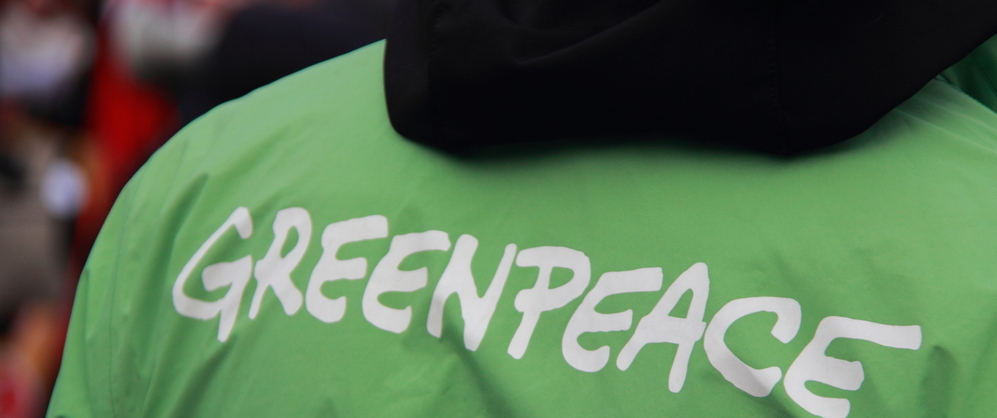
“Save the Whales” as a Red Herring
Greenpeace works very hard to maintain its romantic image as a group
committed to saving the whales because its true atavistic, anti-growth
goals turn off many potential donors. Greenpeace is happy to use the
emotional impact of the slaughter of these noble creatures as a red
herring to raise funds and recruit members that further its broader,
more polarizing campaigns.
The irony here is that Greenpeace is not even opposed to whaling in
the first place. In 2008, Paul Watson, an early member of Greenpeace and
later Founder and President of the
controversial Sea Shepherd Conservation Society, declared “pirates” by a federal court,
penned a scathing commentary about the “fraud” of Greenpeace’s Save the Whales campaign:
Enough is enough, the Greenpeace fraud about saving the whales must
be exposed. For years, I have been tolerating their pretense of action
and watching them rake in tremendous profits from whaling… Greenpeace
makes more money from anti-whaling than Norway and Iceland combined make
from whaling. In both cases, the whales die and someone profits.
Greenpeace, he argues, uses the emotional tug of whales being
slaughtered to pull in donations and recruit members. But while
Greenpeace has used this tactic successfully to pull in hundreds of
millions of dollars over the course of its more than 40 years in
existence, it has not succeeded in stopping whalers from continuing
their harvest.
In 1997, Watson had Greenpeace investigated by the National Marine
Fisheries Service of the United States for participating in a whale
hunt. Greenpeace crewmembers on the
Arctic Sunrise actually towed
a slaughtered bowhead whale to shore as a favor for the Inupiat whalers
in the Bering Sea. In doing so, he claims they violated both U.S. and
international law. The incident was reported widely in the Alaskan media
and the whalers used the incident to ridicule Greenpeace at the 1997
International Whaling Commission meeting in Monaco. Such hypocrisy is
evident in many of Greenpeace’s positions.
Tuna Hyperbole
Building off its “successful” whale campaign, Greenpeace has followed
a similar strategy with tuna, twisting the truth to frighten retailers
and shoppers about the tuna industry. For example, it claims that the
tuna industry has massively overfished the bluefin tuna; however,
bluefin is
not used
in U.S. canned tuna. Greenpeace also hits out at the industry for what
it claims is the vast amount of by-catch that occurs in the course of
fishing, yet scientific evidence shows that by-catch only makes up
1-2% of total catch.
Vandalism for Climate Change
In 2007, six Greenpeace protesters were
arrested
for breaking into a power station in the UK, climbing the 200 meter
smokestack, painting the name Gordon on the chimney, and causing an
estimated $50,000 in damage. At the trial, the Greenpeace protesters
admitted to trying to shut the station down, but argued that they were
legally justified because they were trying to prevent climate change
from causing greater damage to property elsewhere around the world.
Almost as incredible as the argument was the fact that the court bought
it and acquitted the protestors.
[MS2]
Such a judgment sets a dangerous precedent giving Greenpeace carte
blanche to continue its illegal and destructive fear-peddling. Both
The Daily Telegraph and
The Guardian described the acquittal as embarrassment to country.
Anti-Science Activism

Genetically Modified Organisms (GMOs)
GMOs, or genetically improved foods, are foods such as corn or soy
that have been modified with modern technology to have a certain trait,
such as drought resistance or beta carotene (the precursor to Vitamin
A). Despite the promise and safety of this technology, Greenpeace has
been a leading NGO calling for the rejection of GMOs, going so far as to
coin the term “FrankenFood.”
The scientific community is united in its consensus regarding the
safety of GMOs with the premier scientific body in the U.S., the
National Academy of Sciences,
calling
them safe, noting that after billions of meal served, “no adverse
health effects attributed to genetic engineering have been documented in
the human population.”
More relevant to Greenpeace’s supposed environmental mission, the Academy has also
found
GMOs to be better for the environment, noting that such crops had
reduced insecticide use, reduced use of the most dangerous herbicides,
increased the frequency of conservation tillage and no-till farming,
reduced carbon emissions, reduced soil runoffs, and improved soil
quality: “Generally, [GMOs] have had fewer adverse effects on the
environment than [non-GMOs].”
Greenpeace has taken its opposition to GMOs to extreme levels,
committing illegal acts to thwart their progress. Greenpeace members
broke into
the Australian scientific research organization CSIRO and destroyed a
GMO wheat plot specially designed to have a low glycemic index,
potentially benefitting millions of diabetics. The sentencing judge,
Justice Hilary Penfold, accused Greenpeace of exploiting junior members
to avoid potential punishments themselves.
According to Dr.
Michael Mbwille
of the Food Security Network, “Greenpeace prints and circulates these
lies faster than the Code Red virus infected the world’s computers. If
we were to apply Greenpeace’s scientifically illiterate standards
universally, there would be nothing left on our tables.”
While Greenpeace’s alarmism and fear-peddling may be immoral, its
opposition to GMOs is also dangerous. GMOs such as Golden Rice – rice
engineered with high levels of beta carotene – have the power to reverse
malnutrition in the developing world, where each year
2 million children die and 500,000 go blind from Vitamin A deficiencies. Scientists are excited about the potential of GMOs like golden rice to ameliorate these problems.
But Greenpeace has consistently sought to end GMO use in developing countries. For example, in famine-stricken Zambia it
contends
that the U.S. “should follow in the European Union’s footsteps and
allow aid recipients to choose their food aid, buying it locally if they
wish.” According to Greenpeace, “This practice can stimulate developing
economies and creates more robust food security.”
Dr. C.S. Prakash, who is the director of the Center for Plant Biotechnology Research,
articulates
the threat that Golden Rice and GMOs in general pose for Greenpeace:
“Critics condemned biotechnology as something that is purely for profit,
that is being pursued only in the West, and with no benefits to the
consumer. Golden Rice proves them wrong, so they need to discredit it
any way they can.”
DDT
Greenpeace also maintains a dangerous opposition to DDT, which is one
of the most important tools for fighting the deadly spread of malaria
in the developing world. Malaria is estimated to kill
1.2 million people
each year despite the fact that DDT had almost eliminated it, as it had
previously done in the U.S. and other developed countries, before its
use was banned.
Greenpeace has been a
leading
opponent of DDT, joining with 260 environmental groups “demanding
action to eliminate” DDT and its sources. Like many environmentalist
groups, Greenpeace was widely influenced by Rachel Carson’s 1962 book
Silent Spring
that illustrates the negative effects DDT can have on animal and plant
life. As it turns out, however, nowhere in her book did Carson call for
the unilateral suspension of chemical insecticides; she simply
questioned their arbitrary and unrestricted use. As Greenpeace defector
Dr. Patrick Moore points out, “It was not Rachel Carson who was
unreasonable, but rather the extremists who used her writings to further
a zero tolerance agenda.”
As late as 2000 Greenpeace continued lobbying the United Nations to
rule out the use of DDT against malaria. Only under great humanitarian
pressure has it walked back its dogmatic opposition to DDT in the case
of malaria control, now claiming, “Greenpeace was never opposed to the
use of malaria control.” Dr. Moore
says this claim is “one of the most blatant examples of historical revisionism I have encountered.”
Chlorine in Water
Chlorine in drinking water is widely
considered to be one of the great public health achievements of the 20
th
century, killing the microorganisms within it, and making it drinkable.
It is credited with virtually eradicating water-borne diseases such as
cholera. Chlorine also provides the earth’s population with 85 percent
of all pharmaceuticals and vitamins. Despite these facts, and broad
support of water chlorination from the scientific community, Greenpeace
maintains a fundamentalist opposition to its use.
According to
Greenpeace’s Joe Thornton, “There are no uses of chlorine which we
regard as safe.” It maintains a wholesale rejection of “the use, export,
and import of all organochlorines, elemental chlorine, and chlorinated
oxidizing agents.”
Opposition to chlorine was the final straw for Greenpeace founding
member Dr. Patrick Moore, who left the organization in 1986 when it
decided to support a universal ban on chlorine in drinking water. Moore
argues
that Greenpeace today is motivated by politics rather than science and
that none of his “fellow directors had any formal science
education.” Nowhere is this better exemplified than with Greenpeace’s
rejection of chlorine.
Flame Retardants
Several years ago, Greenpeace began going after electronics,
specifically the chemicals used in their formation. Greenpeace condemned
the entire industry, saying that no company was doing enough to keep
toxic chemicals out of consumer electronics. It viscerally went after
Apple for using a small amount of toxic flame retardant,
tetrabromobisphenol A, a chemical widely
credited with preventing hundreds of deaths each year from electric fires and that has never been shown to be harmful to humans.
In October of 2005, a panel of scientific experts from Europe, the EU
Scientific Committee on Health and Environmental Risks (SCHER),
reported to the European Commission that TBBPA presents
no risk to human health and indicated no need for risk reduction measures.
According to Biochemical Pharmacology professor
Alan Boobis,
“The plastics used in TV and computer housings are hard and dense so
that substances used in their construction have little opportunity to be
released. [Fire Retardants] have essentially no tendency to move from
the solid state into a gas form, and thus are unlikely to be released
into the air around the computer or TV. Monitoring studies have
confirmed that TVs and computers are not significant emission sources.”
Bisphenol A
Another chemical that has recently found its way into the Greenpeace
crosshairs is bisphenol A, otherwise known as BPA. BPA is a building
block of polycarbonate plastics and epoxy resins used in nearly every
industry, including the construction of plastic water bottles and food
storage containers. According to Greenpeace and anti-chemical activists,
BPA is a “gender-bender” that mimics the female hormone estrogen and
can be “linked” to a host of unpleasant medical conditions ranging from
cancer to early onset puberty and dreaded “man boobs.” Once again,
however, the hysteria failed to match reality.
According to the FDA:
Consumers should know that, based on all available evidence, the
present consensus among regulatory agencies in the United States,
Canada, Europe, and Japan is that current levels of exposure to BPA
through food packaging do not pose an immediate health risk to the
general population, including infants and babies.
The FDA’s rejection of Greenpeace’s claims is consistent with the
scientific community’s rejection of Greenpeace’s science in general:
96 percent of toxicologists believe that Greenpeace overstates chemical health risks.
https://www.biggreenradicals.com/group/greenpeace/
=================










